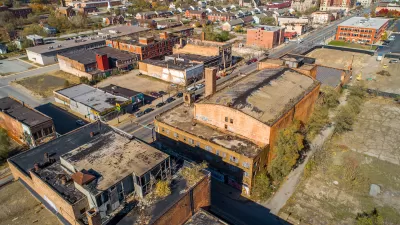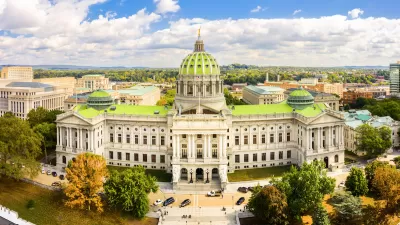More people die than are born in Pittsburgh every year -- seriously impacting the city's schools, laborforce and healthcare infrastructure. Other American cities will soon follow, say demographers.
"PITTSBURGH - This city has passed a grim demographic milestone: More people are dying here than are being born.
What demographers call a natural decrease has been occurring for years in tiny rural towns and in some retirement meccas in the South. But the phenomenon is relatively new in metropolitan areas in the Northeast, the Rust Belt of the Middle West and Appalachia.
Hospitals are closing obstetrics wards and converting them to acute care. Local governments and other social service providers are adjusting to the emergence of entire neighborhoods where the average age is soaring, and private foundations are awarding scholarships to retain students and attract new ones.
In Pittsburgh, public school enrollment plummeted from about 70,000 two decades ago to about 30,000 and continues shrinking by about 1,000 a year."
"While natural decrease occurred in many Southern cities that were magnets for retirees, the overall population was replenished by the influx of younger migrants. But in Pittsburgh and other places outside the South, not only has the population aged in place, but also, to a lesser extent, the very old - often disabled and widowed - have returned to spend their last years with children and grandchildren and avail themselves of better medical treatment and transportation."
FULL STORY: As Deaths Outpace Births, Cities Adjust

Planetizen Federal Action Tracker
A weekly monitor of how Trump’s orders and actions are impacting planners and planning in America.

Congressman Proposes Bill to Rename DC Metro “Trump Train”
The Make Autorail Great Again Act would withhold federal funding to the system until the Washington Metropolitan Area Transit Authority (WMATA), rebrands as the Washington Metropolitan Authority for Greater Access (WMAGA).

The Simple Legislative Tool Transforming Vacant Downtowns
In California, Michigan and Georgia, an easy win is bringing dollars — and delight — back to city centers.

The States Losing Rural Delivery Rooms at an Alarming Pace
In some states, as few as 9% of rural hospitals still deliver babies. As a result, rising pre-term births, no adequate pre-term care and "harrowing" close calls are a growing reality.

The Small South Asian Republic Going all in on EVs
Thanks to one simple policy change less than five years ago, 65% of new cars in this Himalayan country are now electric.

DC Backpedals on Bike Lane Protection, Swaps Barriers for Paint
Citing aesthetic concerns, the city is removing the concrete barriers and flexposts that once separated Arizona Avenue cyclists from motor vehicles.
Urban Design for Planners 1: Software Tools
This six-course series explores essential urban design concepts using open source software and equips planners with the tools they need to participate fully in the urban design process.
Planning for Universal Design
Learn the tools for implementing Universal Design in planning regulations.
Smith Gee Studio
City of Charlotte
City of Camden Redevelopment Agency
City of Astoria
Transportation Research & Education Center (TREC) at Portland State University
US High Speed Rail Association
City of Camden Redevelopment Agency
Municipality of Princeton (NJ)





























